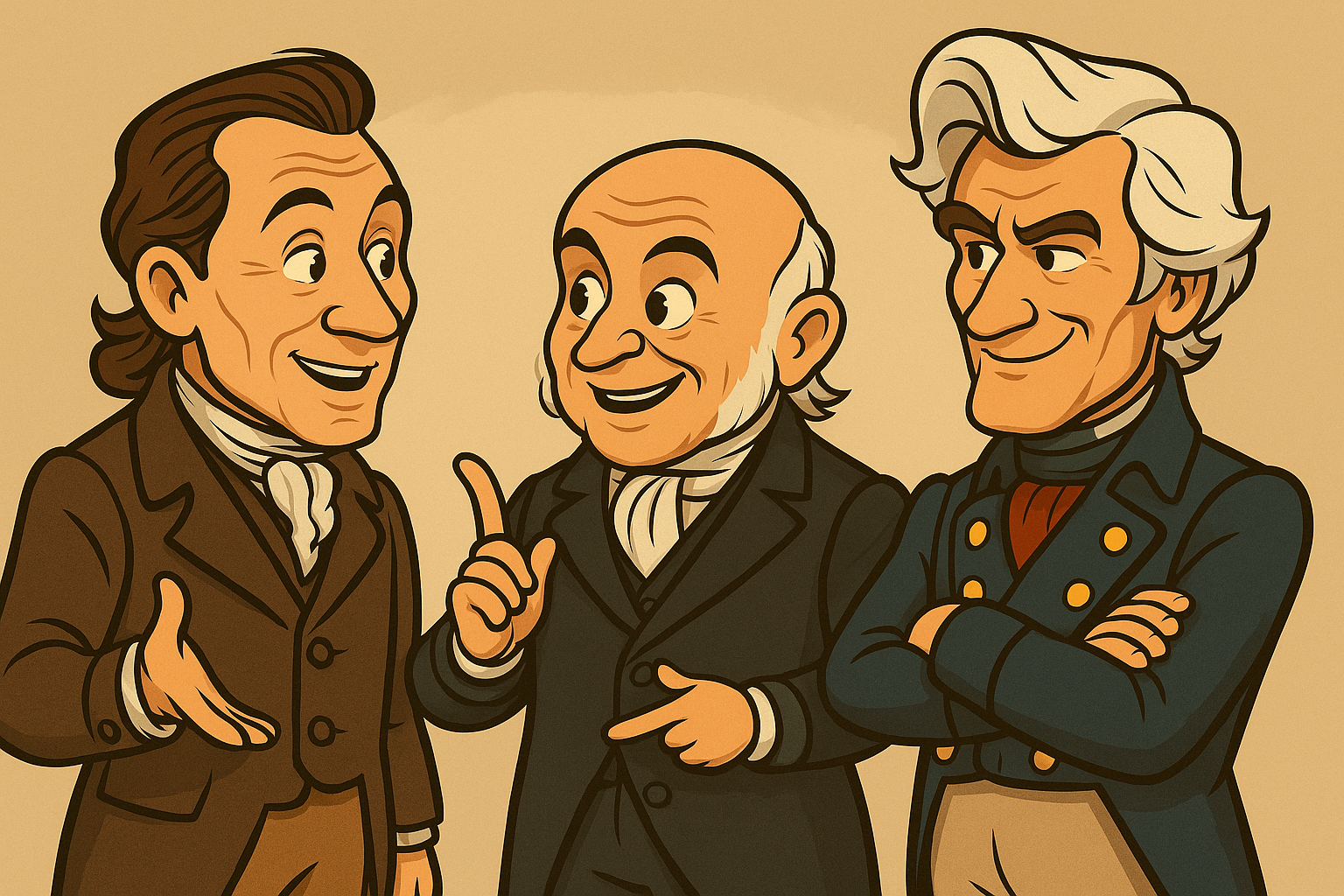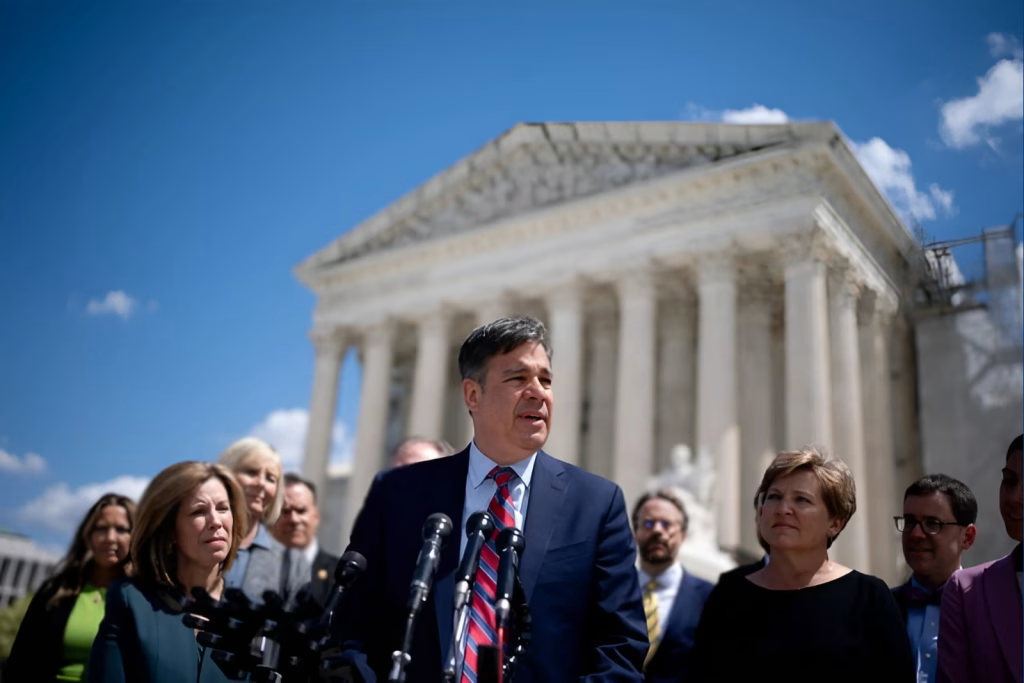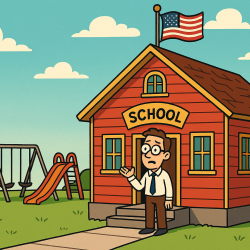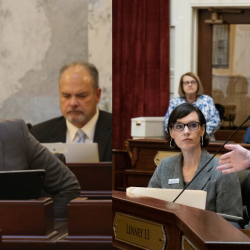Idaho is clearly a one-party state. More than 60% of registered voters are Republican, compared to 25% unaffiliated and fewer than 12% registered Democrats. The 68th Idaho Legislature, which convened in January, is nearly 86% Republican, with 90 GOP members versus just 15 Democrats.
All but one of those Democrats represent Boise. The lone outlier is Sen. James Ruchti of Pocatello.
With the Blue Team largely irrelevant in statewide politics, it’s only natural for factions to form within the dominant Red Team. Factionalism, after all, is more American than apple pie. The Founding Fathers anticipated it and tried to mitigate it, but people naturally band together around shared goals. There’s nothing wrong with that.
Strife enters when factions insist that the party must exclusively reflect their own views, demanding ideological purity and expelling dissenters. This kind of purity spiral often follows major political victories and tends to destroy the coalitions that made those victories possible in the first place.
You can see this dynamic throughout American history.
Our first two political parties developed from factions within President George Washington’s cabinet. Supporters of Alexander Hamilton and John Adams, favoring a strong national government, became the Federalists. Followers of Thomas Jefferson and James Madison, who emphasized states’ rights, became the Democratic-Republicans.
At first, both parties contested the presidency and Congress, but the War of 1812 changed everything. Many Federalists opposed President Madison’s management of the war and met in Hartford, Connecticut to propose changes to the Constitution and the war effort. By the time their proposals were finalized, the war had ended, and General Andrew Jackson had secured a stunning victory at New Orleans. The Federalists were branded as cowards and traitors and quickly faded from the national stage.
By 1820, the U.S. had essentially become a one-party nation. James Monroe won his second term without opposition in what historians call the “Era of Good Feelings.” Monroe even brought former Federalists into his administration, including John Quincy Adams as Secretary of State.
But no political consensus lasts forever. As Democratic-Republicans absorbed many Federalist ideas, such as support for a national bank, there was little left to disagree with externally. Instead, internal divisions emerged. By 1824, five major figures from within the party—John Quincy Adams, William Crawford, John C. Calhoun, Henry Clay, and Andrew Jackson—were all vying for the presidency.
When no candidate won a majority of electoral votes, the House of Representatives had to choose among the top three. Clay, finishing fourth, used his influence as Speaker to secure the presidency for Adams, who then made Clay his Secretary of State. Jackson, infuriated, called it a “corrupt bargain.”
I’m nearly finished reading William Cooper’s biography of John Quincy Adams, and what stands out is how the early 19th century echoes our present. Human nature hasn’t changed; we still repeat the same patterns under new circumstances.
Adams believed the Era of Good Feelings had ended partisan politics for good. Even as president, he attempted to maintain that unity, appointing not only his 1824 opponent Clay to his cabinet but offering the War Department to Andrew Jackson, who refused, instead spending the next four years organizing a new political movement to oppose the president. In 1828, Jackson won the presidency in a landslide, and his movement became the Democratic Party.
Opposition to Jackson eventually coalesced into the Whig Party, and a new party system was born. This lasted until the 1850s, when anti-slavery factions united to form the Republican Party.
So, what can we learn from the collapse of the Era of Good Feelings?
The most important lesson is that political alliances are temporary. They form around immediate needs and shared goals, but dissolve just as quickly when circumstances change.
In Idaho, conservatives rallied after the COVID-19 lockdowns, dramatically reshaping the Legislature between 2020 and 2024. Dozens of lawmakers were elected who championed limited government, lower spending, and traditional values.
But that alliance, like so many before it, has begun to fracture. With COVID in the rearview mirror, new disagreements have emerged. Now, each faction—and the mini-factions within them—claims to represent the true Republican Party, insisting their vision alone is legitimate.
I’m not here to relitigate those internal disputes. You can find plenty of that on social media. I’m more interested in asking: How do we work together despite our differences?
About a year ago, I wrote about Ronald Reagan’s “big tent” philosophy and how both wings of the GOP misunderstand it:
The left side, the moderates, believe that they really can be all things to all people. They often seem willing to abandon conservative policy positions in favor of leftist ideas, though they might appeal to very vague principles to justify it. Recall that former Arkansas governor Asa Hutchinson vetoed a bill to protect children from genital mutilation surgeries by saying that Republicans don’t get between families and doctors. That is a fundamentally dishonest application of Republican principles and shows that Hutchinson had adopted a left wing frame of reference.
When this group talks about the “big tent” they only ever want to expand it toward the left. I know many Idaho Republicans who will happily commingle with outright socialists or people who advocate for mutilating children, but would never be caught talking to someone on the right who has been labeled as a racist or extremist by corporate news media. These people would happily excise the right side of the party to garner positive coverage by the left wing media.
The right side, on the other hand, errs by continually trying to keep their side as small as possible. People on this side will often excommunicate their own for differences over strategy or for working with moderates on any issue. Unlike the left side of the party, which craves the approval of corporate news media, the right side relishes in its disapproval.
Parties can be broadly defined, which risks watering down principles, or narrowly defined, which risks irrelevance. The trick of politics is to find the middle ground. Reagan understood this, which is why he was perhaps the most successful political figure of the late 20th century:
Within our tent, there will be many arguments and divisions over approach and method and even those we choose to implement our philosophy. Seldom, if ever, will we raise a cheer signifying unanimous approval of the decisions reached. But if our philosophy is to prevail, we must at least pledge unified support of the ultimate decision. Unity does not require unanimity of thought.
Earlier this year, Ada County GOP 1st Vice Chair Ryan Spoon echoed this principle:
An important leadership principle that I have learned is “praise in public, criticize in private.” Identify who is on your conservative team, and then conservatives should not be PUBLICLY criticizing other conservatives. We can have some very aggressive and robust disagreements behind closed doors, but our disagreements and criticisms stay behind those closed doors until we reach a point that we have to sorrowfully conclude that a person is no longer on our conservative team. Be careful! Don’t rush to those parting decisions! It’s very hard to take back that decision to part ways.
Today’s opponent might be tomorrow’s ally, and vice versa. Burning bridges helps no one. Legislators must learn to disagree without holding grudges, or they risk standing alone when it matters most. Imagine if John Quincy Adams had refused to serve under Monroe because of past disagreements.
In her column last week, Idaho GOP chairwoman Dorothy Moon lauded the unity among Republicans that came out of the shared Republican fight against ranked choice voting:
The unity we forged during the fight against Prop 1 carried over into the 2025 legislative session. Republicans now hold 90 of the 105 seats in the Legislature, and those 90 span a wide range of the ideological spectrum. But I saw people who were once firmly at odds figure out how to work together, and the result was a legislative session packed with conservative policy victories. When Republicans unite, everybody wins.
Unity doesn’t mean selling your soul; rather it means learning how to work well with others to accomplish shared goals. I thought Rep. Jaron Crane did a terrific job forging unity within a huge caucus that spans the likes of Reps. Clint Hostetler and Kent Marmon to Rick Cheatum and Jack Nelsen. He sat down House Republicans at the start of the session and worked out five top priorities that a majority could support, and then proceeded to work toward achieving those priorities:

Obviously, we can quibble about how well they accomplished each of these priorities, but this is the nature of a broad political coalition.
So what are Idaho conservatives to do now that the era of good feelings born from our united opposition to the COVID lockdowns has come to an end? Are we destined to fracture into warring factions so divided that we can no longer work together? Or can we acknowledge our differences on a handful of issues while forging a renewed alliance around the many principles and policies we still share?
Without a strong Democratic Party to oppose in Idaho, it’s natural for Republicans to turn their energy inward and fight each other. But let’s not lose sight of the bigger picture. A pro-abortion ballot initiative is coming next year. The Left continues to scheme in its ongoing efforts to turn Idaho blue. Nobody knows what the future holds at the national level. Now is the time to unify around our shared priorities: cutting spending, reducing the size and scope of government, reining in the administrative state, and protecting traditional Christian values in our state.
The worst possible response to our current disagreements is to take your ball and go home. As someone recently told me, “If you’re not at the table, you’re on the menu.” Don’t sell your soul just to get a seat—but don’t boycott the meal, either. The political center of gravity in the Idaho Legislature has shifted dramatically to the right over the past five years. Yet history reminds us that no political system lasts forever. The Jacksonian Democrats dominated from 1828 to 1860, but do you know how many presidential elections they won between 1860 and 1912? Just two. The political landscape can change in the blink of an eye. Let’s not squander this once-in-a-generation opportunity to advance conservative policy by turning on each other.
Gem State Chronicle is a reader-supported publication. To receive new posts and support my work, consider becoming a free or paid subscriber.
About Brian Almon
Brian Almon is the Editor of the Gem State Chronicle. He also serves as Chairman of the District 14 Republican Party and is a trustee of the Eagle Public Library Board. He lives with his wife and five children in Eagle.













